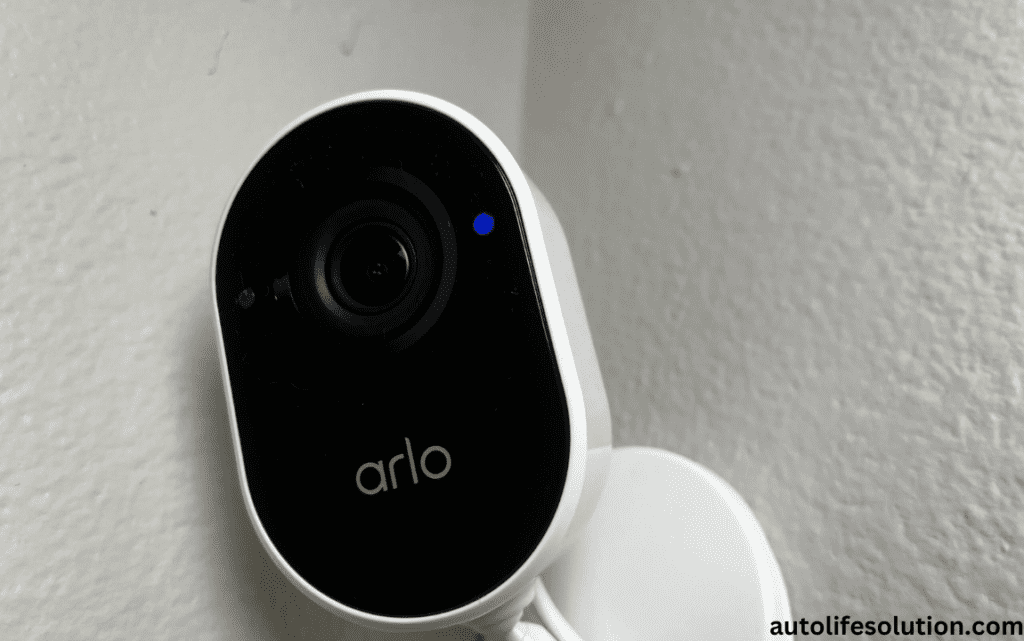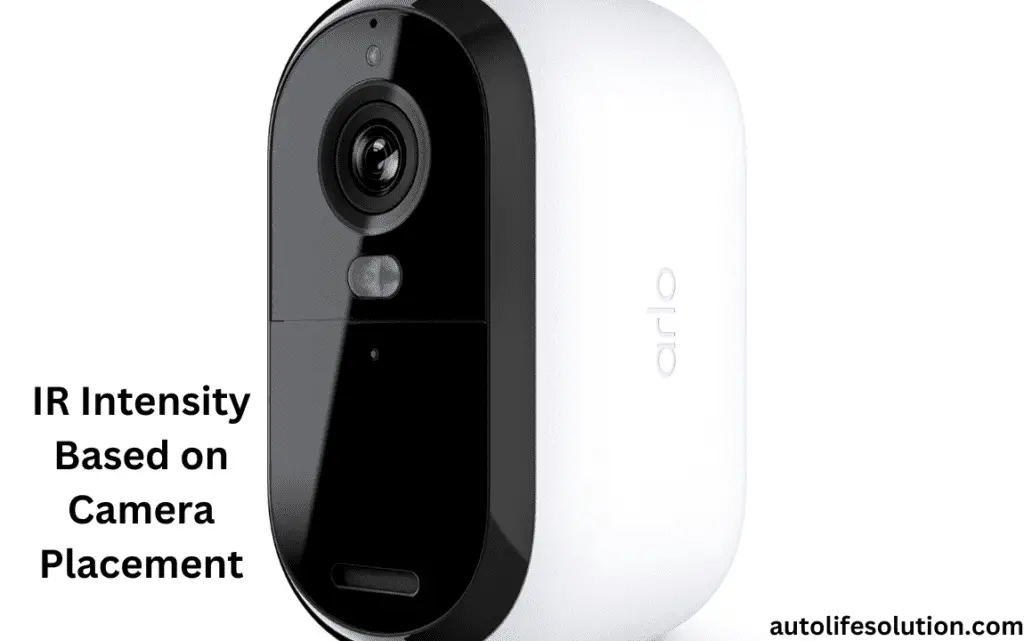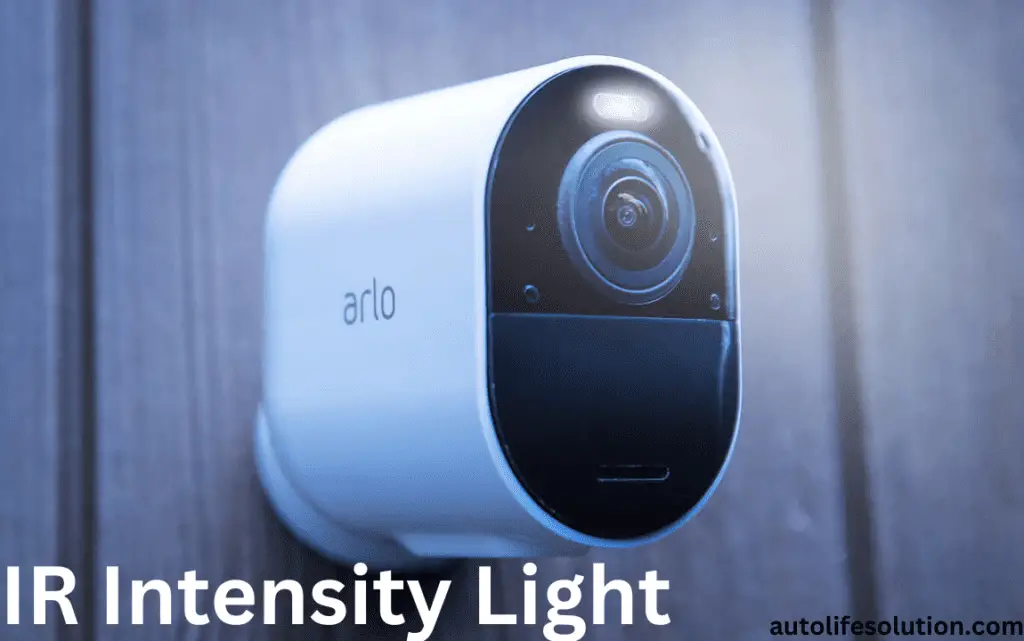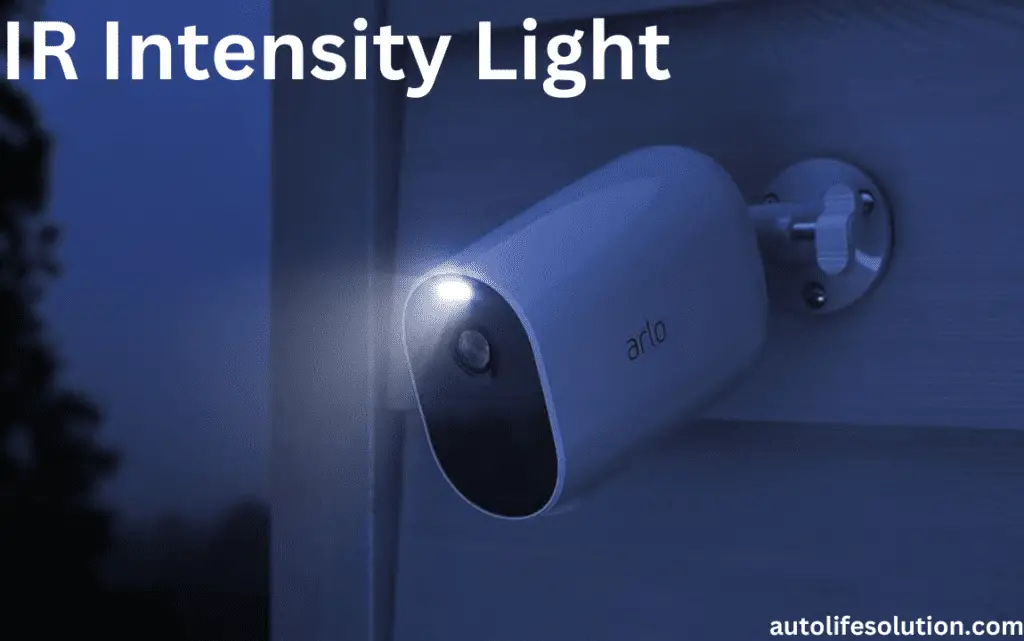Elevate security with IR Intensity on the Blink Camera. Unmatched night vision for superior surveillance. Explore the difference now, You’re likely acquainted with the Blink camera as a solid home surveillance camera with night vision, however, you probably won’t realize that you can change its IR force. Those infrared lights permit you to find them in obscurity, however, turning them up too high can cause overexposure in pictures.
Getting the power perfectly takes some experimentation, yet it’s worth the effort to get a starry evening view without an excess of IR light glare. In this article, we’ll stroll through how to change the IR power on your Squint cameras bit by bit and give you a few ways to figure out the perfect balance that works for your home arrangement.
What Is IR Intensity on a Blink Camera?

IR power alludes to the brilliance of the infrared lights on your Squint camera. These infrared LEDs permit the camera to find in low light and around evening time. Changing the IR power changes how brilliant those infrared lights sparkle.
- At higher intensities, the IR LEDs emit more light, allowing the camera to see farther away in the dark. This gives you a larger night vision range.
- Lower intensities reduce the IR light, decreasing the night vision distance but potentially improving image quality in some cases.
Getting the IR intensity setting right for your specific needs and mounting location is important. Here are some key pointers:
Factors That Affect IR Intensity
Several things impact what intensity you should use:
- Distance – The farther your camera is mounted from the area you want to monitor, the higher intensity you generally need to “see” that full space.
- Angle – Adjust the camera angle and direction to balance light distribution in the frame.
- Environment – Consider how much ambient or other light sources are around. More surrounding light means you may need less IR intensity from the camera.
Adjusting IR Levels
Blink offers three IR intensity modes to choose from:
- Low – Best for close-up monitoring under about 15 feet. Can improve image quality.
- Medium – Balances distance and image quality. Good for most home setups.
- High – Maximizes night vision range, but images may look more washed out.
Start on IR Intensity on Blink Camera Medium and tweak from there once mounted based on your needs and the camera view. The mobile app makes this easy to change anytime.
Optimizing the IR levels takes some experimentation to find the sweet spot – not too bright and not too dim. But it’s worth playing around with to maximize what your Blink camera setup can “see” when the lights go down.
Why Adjust IR Intensity on Your Blink Camera?

Blink cameras are great home security devices, but you might notice video quality issues in certain lighting conditions. The IR Intensity on Blink Camera that allows night vision can sometimes cause overexposure and wash out your footage. Adjusting the IR intensity gives you more control over video quality.
Here are three key reasons to customize IR intensity:
- Prevent overexposed night footage. If lights are too bright, images appear washed out and details are lost. Turning down IR intensity reduces glare. You’ll capture clearer footage to see what’s happening.
- Save battery life. At maximum intensity, IR LEDs are power-hungry. Your Blink’s battery will drain faster. Find the lowest intensity that still works for your area lighting. Your camera’s battery can then last longer between charges.
- Eliminate IR reflection. Sometimes IR light reflects off nearby surfaces like glass or metal, ruining footage. Adjust intensity so light reaches only where needed. Reflections disappear, leaving you with usable video.
Blink also suggests adjusting IR intensity seasonally. IR requirements can change with shifting sunlight and temperatures. What works in summer likely needs adjusting come winter. Get in the habit of regularly checking and tweaking settings.
Here’s a simple process to follow:
- Open the Blink app and select your camera’s Settings.
- Tap Video Settings > IR LED Strength.
- Use a slider to reduce intensity until the video looks best. Don’t go too low.
- Test overnight footage. Make small adjustments as needed.
Optimizing IR intensity takes some trial and error. But it’s worth it. A few quick tweaks give you better quality, more useful video day and night. So take control of that IR slider for crisper, clearer footage and smarter home monitoring.
How to Change IR Intensity Settings on Blink App

The infrared (IR) night vision included on Squint cameras permits you to screen your home any season of day or night. The IR LEDs on your camera radiate infrared light that is undetectable to the natural eye but distinguishable by the camera. This works perfectly in low to no-light circumstances.
You can adjust the IR intensity in the Blink app to optimize performance based on the camera’s placement and needs:
- Open the Blink app and select your camera.
- Tap on “Settings” and select “Preferences”.
- Scroll down and tap on “IR LED Level”.
Here you’ll see a slider bar from IR Intensity on Blink Camera low intensity to high intensity. Move it left or right to decrease or increase the IR output power. Some things to consider:
- Outdoors, start with the highest IR intensity if your yard is large or the camera is mounted high. This reaches farther out into the landscape. Move the slider left to lower the intensity if you only need 10-15 feet of night vision.
- For indoor cameras, start with a lower IR intensity and only increase if you notice poor visibility at night in certain areas. Too much intensity can overexpose some objects and reflect off windows.
- When mounted behind glass, lower the IR intensity to prevent IR light from reflecting into the lens, causing a white glow.
- Test different settings at night to determine the ideal intensity for each camera position. This gives you the right balance of visibility range without overpowering the sensor.
Don’t forget to revisit your settings if you move your camera or change its position later on. The optimal IR intensity will likely need tweaking with any changes to the camera angle or surroundings. Take the time to get it right and your Blink will capture crisp night vision every time.
Recommended IR Intensity Settings for Day and Night

The IR (infrared) intensity setting on your Blink camera controls how much-infrared light it emits at night to illuminate the area it’s monitoring. Getting this setting right is key for ideal night vision image quality.
Daytime Setting: Leave your IR intensity set to Off or 0% during the day. IR illumination is not needed when there’s plenty of visible daylight.
Nighttime Setting: Crank it up to 100% IR intensity at night. This allows the infrared LEDs around the camera lens to shine at full strength and light up the scene so you can see clearly in black-and-white night vision.
Sometimes 50% IR intensity is recommended at night. But for the best visibility with the sharpest focus, maxing it out at 100% is generally preferred. Here’s why you may want to go full blast instead of halfway:
- Provides wider and farther infrared light coverage for capturing your entire property, yard, driveway, entryways or whatever area you’re monitoring
- Enables seeing finer details like faces, clothing, vehicles, license plates and other identification markings
- Allows seeing farther into darker areas of the camera’s field of view that would otherwise be obscured
Of course, every location is different. If you find 100% IR Intensity on Blink Camera creates overexposure or washed-out areas in the night vision image, then try experimenting between 50-80% intensity. The sweet spot is the highest setting before image quality degrades.
Pro Tip: Mount your Blink camera on a wall or under IR Intensity on Blink Camera an eve facing out, rather than pointing down. Angling the camera out allows the IR LEDs to spread the infrared light farther and wider. Pointing it down concentrates the light in a smaller area right in front of the camera only.
Be sure to use the Blink app’s live view to test different IR intensity percentages and camera angles at night. This allows you to see the adjustments in real-time. Get it set perfectly so you have excellent visibility to spot any unwanted nighttime activity on your property.
Troubleshooting Issues With IR Intensity

With regards to your Squint camera’s infrared (IR) force, getting the fixing is critical. We should take a gander at a few normal issues you might experience and how to address them:
- The picture is excessively dim around evening time – On the off chance that your night vision film is so dim you can scarcely make out what’s there, take a stab at knocking up the IR force under Video Settings. This makes the infrared light more brilliant to enlighten the scene. Go up in augmentations of 20-30% at a time.
- The picture is excessively splendid or overexposed around evening time – On the other side, the night vision picture might look unnaturally brilliant or IR Intensity on Blink Camera smothered. For this situation, bring down the IR power until dim regions are more apparent while staying away from excessively dull film. Little changes around 10% at once.
- Testing with live view – When adjusting IR intensity or exposure settings, use your app’s live view rather than recorded clips to see the impact in real-time. This allows quick iteration to hone in on the sweet spot.
IR light reflects once again into the outline / Night and day settings are drastically different
| IR light reflects once again into the Outline | Night and Day settings are Drastically Different |
| At times the infrared light glistens off neighboring surfaces like walls and fences, causing overexposure in pieces of the picture outline | For the camera to transition smoothly between night vision and daylight imagery |
| Take a stab at calculating your camera diversely or moving it farther away from reflective surfaces | The IR intensity and daytime exposure settings should align reasonably well |
| Lowering IR intensity can also help in some cases | If going from day to night looks jarring, tweak these settings until the differences are more subtle |
Getting the IR intensity dialled in takes some trial and error. As lighting conditions change, you may need to revisit these settings periodically. With the right balance, your Blink camera can capture crisp, vivid footage around the clock. Let the troubleshooting above guide you if issues pop up.
Tips for Proper IR Intensity Based on Camera Placement
When setting the IR Intensity on Blink Camera, there are a few key things to consider based on where you position the camera:
- Assuming your camera is confronting a region that gets immediate daylight during the day or brilliant counterfeit light around evening time, you’ll by and large need to set the IR power lower. The IR lights on the camera won’t have to fill in as difficult to enlighten the region since there is now more than adequate light. Setting the power too high could cause overexposure.
- For cameras placed in shaded areas or facing darker spaces that get less ambient light, setting the IR intensity higher is often better. This allows the camera’s IR lights to reach farther into dimly lit areas and capture clearer footage at night.
- Try to avoid positioning cameras where IR Intensity on Blink Camera will reflect directly off smooth surfaces like glass or metal. The reflected light can overexpose the image. If you must mount a camera facing these types of surfaces, turn the IR lights off or set them very low.
- For indoor cameras, an IR intensity of 6-8 is usually sufficient to light most average-sized rooms. Large spaces may require higher settings. Start low and adjust up gradually if needed.
- Outdoor cameras covering larger areas often need higher IR intensity settings of 8-10 to illuminate the full range at night. But don’t crank it up to start.
- When adjusting intensity, check the camera feed in both daytime and nighttime lighting. Make small incremental changes and allow time for the camera to adjust between tweaks.
- If you notice sections of the image are overexposed or washed out from too much IR light, selectively block part of the IR lights by applying external masking. Electrical tape works well for this.
Finding the right balance comes down to testing different IR settings to get evenly exposed images in all conditions. Place your cameras thoughtfully, fine-tune the intensity to your specific needs, and mask overly bright sections if necessary.
How Weather Impacts IR Intensity Needs

A Blink utilizes infrared (IR) innovation to find in low light circumstances or around evening time. The IR LEDs encompassing the camera focal point discharge infrared light that is imperceptible to the natural eye. However, your Flicker camera can see and record this IR Intensity on Blink Camera reflected from objects in the camera’s field of view.
The intensity level of the IR LEDs can be adjusted in the Blink app. Why would you need to change this setting? The weather and seasons often dictate your IR needs:
- Hot summer days may require lower IR intensity. Infrared light creates heat. So on very hot days, crank down the IR level to avoid overheating your Blink camera.
- Rainy or foggy weather can decrease IR effectiveness. Increase your IR intensity on cloudy, rainy or foggy days and nights to compensate. The tiny water droplets diffuse and scatter some of the infrared light. A higher intensity helps cut through precipitation static.
- Winter often needs boosted IR capacity. Snow reflects IR light even better than most surfaces. But cold temperatures can sap battery life. So you may need to fine tune both IR intensity and battery settings based on winter conditions.
- Nighttime needs more IR power. IR illumination seems brighter to camera sensors at night. You can usually turn down the intensity during daylight hours to save battery life. But don’t leave it too low for those dark winter nights.
Get to know how your IR Intensity on Blink Camera handles different weather conditions during each season. Find the sweet spot for IR intensity that balances video quality and battery runtime through heat waves, rainstorms, snow drifts and cold snaps. Like Goldilocks, you want settings that are just right.
IR Intensity Settings for Indoor vs Outdoor Cameras

While setting up your Flicker camera framework, appropriately changing the infrared (IR) power is essential for getting the best video quality. The ideal IR power level relies upon whether your Squint cameras are set inside or outside.
If your camera is inside your home or office building, start with a lower IR intensity level around 4 or 5. The IR illuminator lights up the area directly around your indoor camera IR Intensity on Blink Camera. Since indoor spaces are typically smaller with less ambient light, too high an intensity can make the image overexposed and washed out.
For outdoor cameras, you’ll want to set the IR intensity higher to start, around 7 or 8. Outdoor cameras need to illuminate a larger area which extends farther out from the camera. Crank it higher at night to capture details 30+ feet away in low-light situations.
- Indoors: Lower IR intensity (4-5) for smaller, confined spaces
- Outdoors: Higher IR intensity (7-8+) to light up a larger area
When setting the IR intensity, view the camera’s live feed at night to evaluate the video quality. Adjust in small increments to avoid overexposing the image. If the video looks extremely bright, with whites blown out or details missing, lower the IR brightness. If the picture appears to be extremely dull or you can’t make out objects, increment the force.
Figuring out the perfect balance will take some experimentation. The environment around your camera can also impact the optimal IR intensity. Nearby surfaces like walls, windows and foliage reflect IR light towards the camera. You may need to tweak settings seasonally as tree coverage and ambient light change.
Don’t forget to check both day and night video streams after adjusting the intensity. Make sure you don’t create issues balancing IR brightness against regular daytime visibility. With some testing, you’ll dial in the right setting for crisp, evenly exposed video 24/7. Monitoring video quality and periodically adjusting the IR intensity ensures your Blink cameras capture important details no matter the lighting conditions.
FAQs About Adjusting IR Intensity on Blink Cameras
So you got another IR Intensity on Blink Camera yet find the night vision is excessively brilliant or excessively faint? The infrared (IR) LEDs that permit the camera to find in obscurity can be changed.
What is IR intensity?
IR intensity refers to the brightness of the infrared LEDs on your Blink camera at night. Turning up the intensity makes night vision brighter while turning it down makes it dimmer.
Why adjust IR intensity?
If evening vision is excessively splendid, it can make pictures look smothered and cleaned out. Assuming it’s excessively faint, you probably won’t have the option to make out subtleties of IR Intensity on Blink Camera. Changing the IR power permits you to modify your night vision to your necessities.
How do I change IR intensity?
In the Blink app, go to Settings > Video Settings and adjust the IR LED level slider. Move it left to dim and right to brighten. Test different levels during real night conditions.
What level should I set it to?
This depends on your specific needs and mounting location. Start at 50% and adjust from there. Just make sure you can see what you want clearly in night vision.
Does a higher IR intensity use more battery power?
Yes. Brighter night vision draws more power from the camera batteries. Keep this in mind if your Blink is battery-powered.
Why can’t I increase IR intensity higher?
Blink caps IR intensity at a certain level to prevent overexposure and glare in night vision footage. This limitation protects image quality.
Should I turn IR off during the day?
Yes, disabling IR while there’s daylight will save some battery life. IR is only needed at night.
Don’t be afraid to experiment with your Blink’s IR intensity. Just a small adjustment could make for much clearer night vision videos. Check it over a few nights and tweak it as needed.
Conclusion
- Toward the day’s end, changing the IR power on your Squint camera is tied in with tracking down the right equilibrium for your particular requirements and climate. Make sure to explore!
- Start by setting the IR intensity to Auto and seeing if that works well on its own. The camera will automatically adjust based on the amount of IR illumination needed.
- If you need to override the Auto setting, try Medium as a baseline and then tweak from there if needed. Increase to High if the image lacks definition, or lower to Low to reduce glare.
- When making manual adjustments, it’s best to do so at night when the IR LEDs activate so you can accurately assess their impact. Check the live view and recorded clips to judge image quality.
- As a rule of thumb, higher IR intensity equals a brighter IR Intensity on a Blink Camera and a clearer picture but can produce more visible IR glare. Lower intensity has less glare but may yield dark, grainy footage.
- Positioning also matters – point the camera at a downward angle to minimize glare from the IR LEDs reflecting off surfaces. And make sure the area is reasonably well-lit.
- Revisit your settings periodically to account for seasonal light changes. What works in summer likely won’t still be ideal in winter when nights are longer.
- If all else fails, consider adding supplemental lighting to reduce reliance on the IR LEDs, while enabling a lower IR intensity setting.

5 Replies to “IR Intensity on Blink Camera: Adjust It Right”